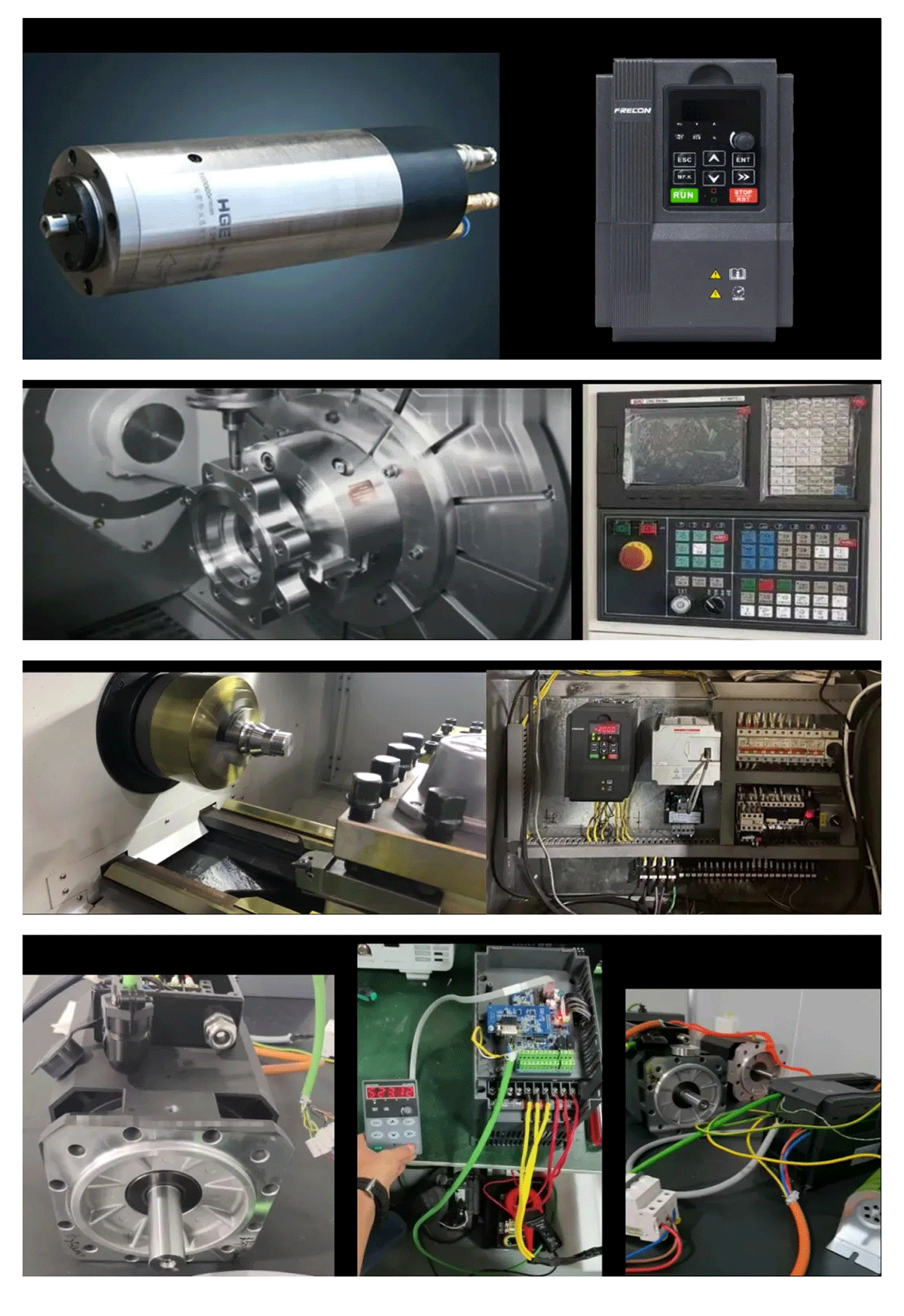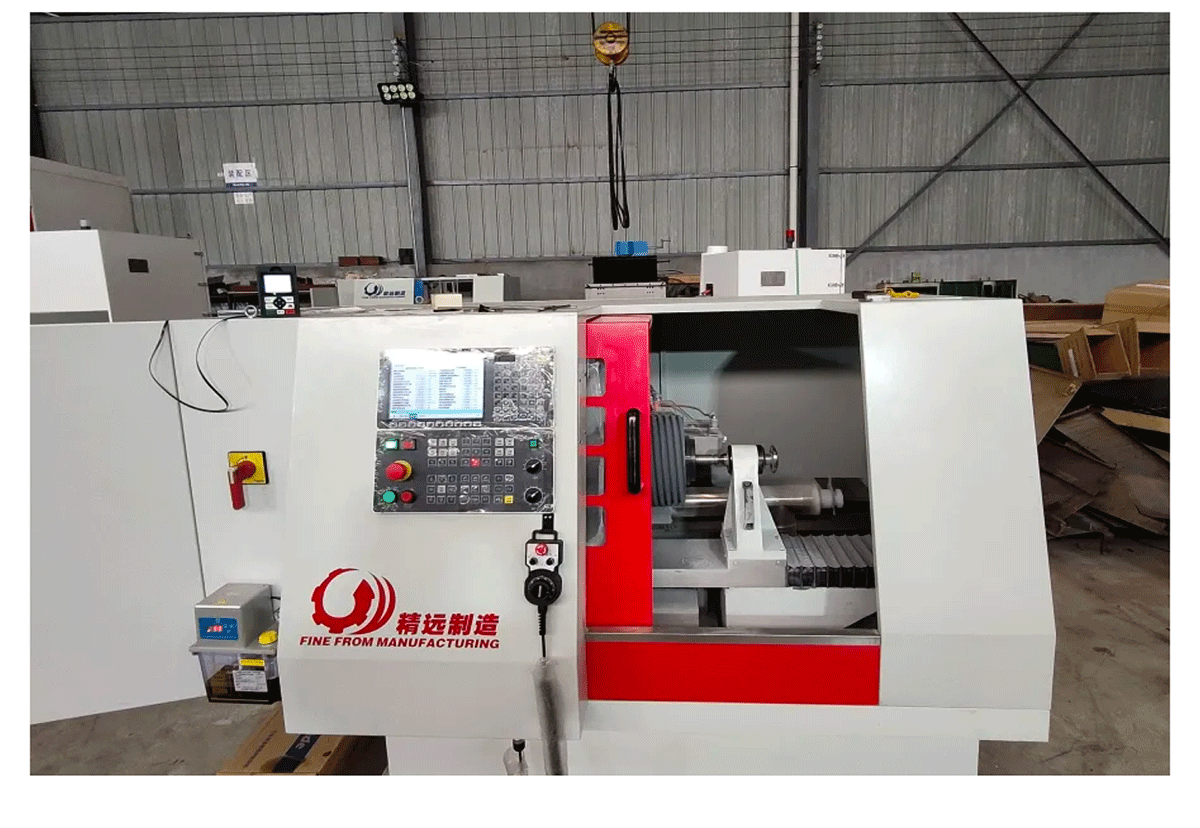
Synchronous electric spindles are characterized by low rotational inertia, high dynamic response, compact size, and high power density. Electric spindles integrate the machine tool spindle and the spindle motor, overcoming the drawbacks of traditional mechanical spindles such as slipping, vibration, high noise, and large inertia at high speeds. They effectively improve the overall performance of spindles in high-speed conditions and are widely used in the field of CNC machine tools.

High-speed electric spindle is a new technology that has appeared in the field of CNC machine tools in recent years, integrating the machine tool spindle with the spindle motor. The main transmission system of high-speed CNC machine tools eliminates the pulley drive and gear drive. The machine tool spindle is directly driven by a built-in motor, thereby shortening the length of the machine tool main transmission chain to zero, realizing the "zero transmission" of the machine tool. This transmission structure form of "combining the spindle motor and the machine tool spindle" makes the spindle component relatively independent from the machine tool's transmission system and overall structure, so it can be made into a "spindle unit", commonly known as "electric spindle".


Maximum operating frequency of 4000Hz.
Open-loop/closed-loop operation.
Smooth start/stop without jitter, short acceleration and deceleration time.
Weak magnetic zone control of permanent magnet synchronous high-speed spindle to avoid driver faults.
Minimal speed fluctuation during high-speed operation.
Low motor vibration speed during operation.
High reliability, suitable for harsh operating environments.

Classification by the characteristics of the electric spindle motor:
Constant torque electric spindle: During the entire process of electric spindle speed regulation, the motor power changes linearly with the speed, while the motor torque remains constant. This type of electric spindle is suitable for processing tasks that require constant torque, such as grinding.
Constant power electric spindle: During the entire process of electric spindle speed regulation, the motor maintains a constant power at a certain speed. This type of electric spindle is suitable for processing tasks that require constant power, such as milling and electric spindles for machining centers.
Classification by the bearing support method of the electric spindle:
Gas bearing electric spindle: uses air hydrostatic bearings as support.
Liquid bearing electric spindle: uses liquid hydrostatic bearings as support.
Magnetic suspension bearing electric spindle: uses magnetic suspension technology for support, without mechanical contact, suitable for high-precision and high-speed applications.
Rolling bearing electric spindle: uses precision rolling bearings as support. According to different lubrication methods, it can be divided into grease, oil mist and oil-gas lubricated electric spindles.
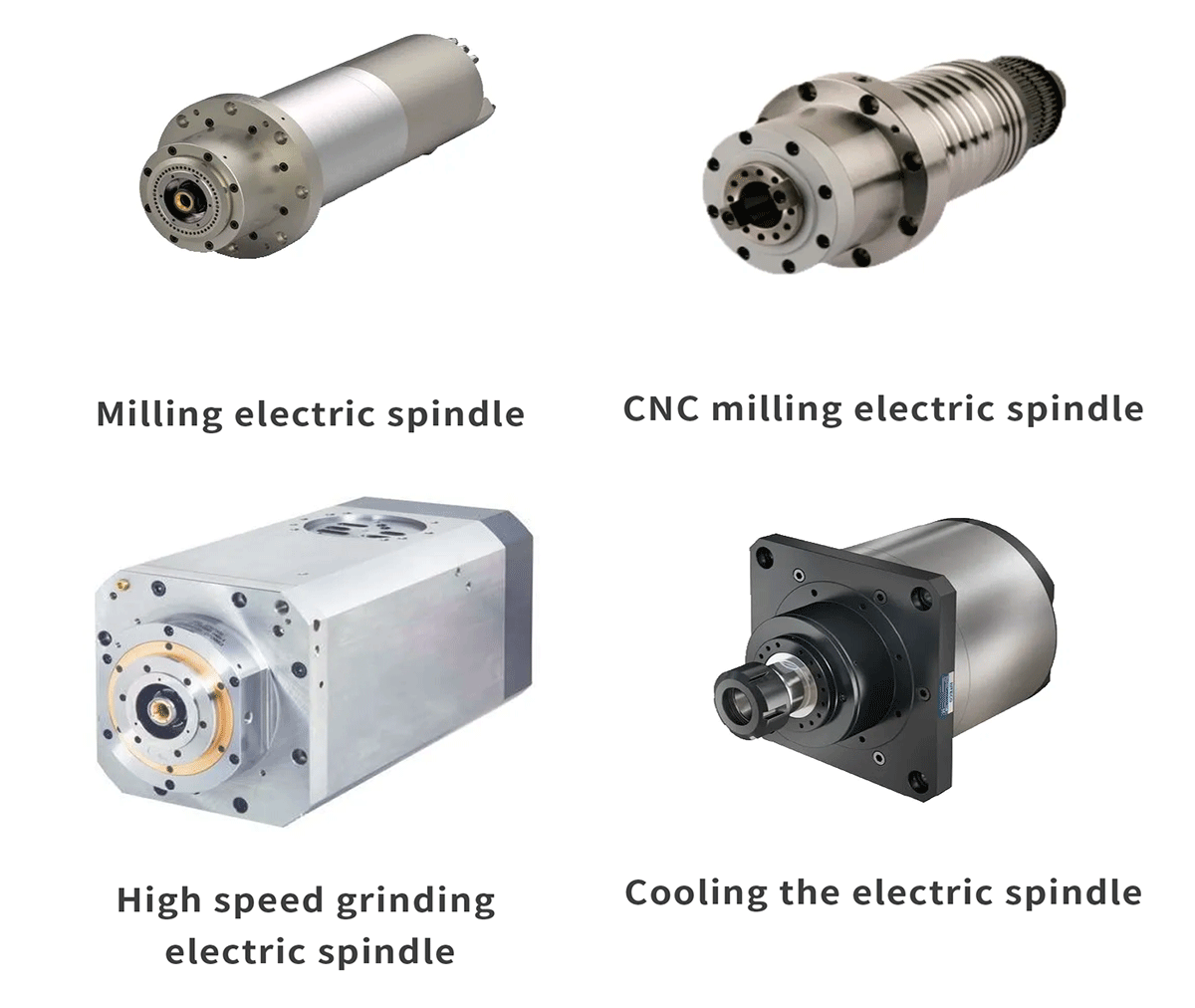
Classification by application area:
Electric spindle for drawing and rolling: used for drawing and rolling processing, such as drawing machines.
Electric spindle for drilling: used for drilling processing, such as drilling machines.
Electric spindle for turning: mainly used for turning processing, such as lathes.
Special rotary test spindle: used for special test or testing equipment.
Electric spindle for milling: suitable for milling processing, such as CNC milling machines and machining centers.
Electric spindle for grinding: mainly used for grinding processing, such as surface grinders and cylindrical grinders.
Electric spindle for machining center: suitable for multi-functional machining centers, which can perform milling, drilling and other processing.
Mechanical spindle (excluding built-in motor) belt drive spindle: suitable for equipment that requires mechanical drive or belt drive.
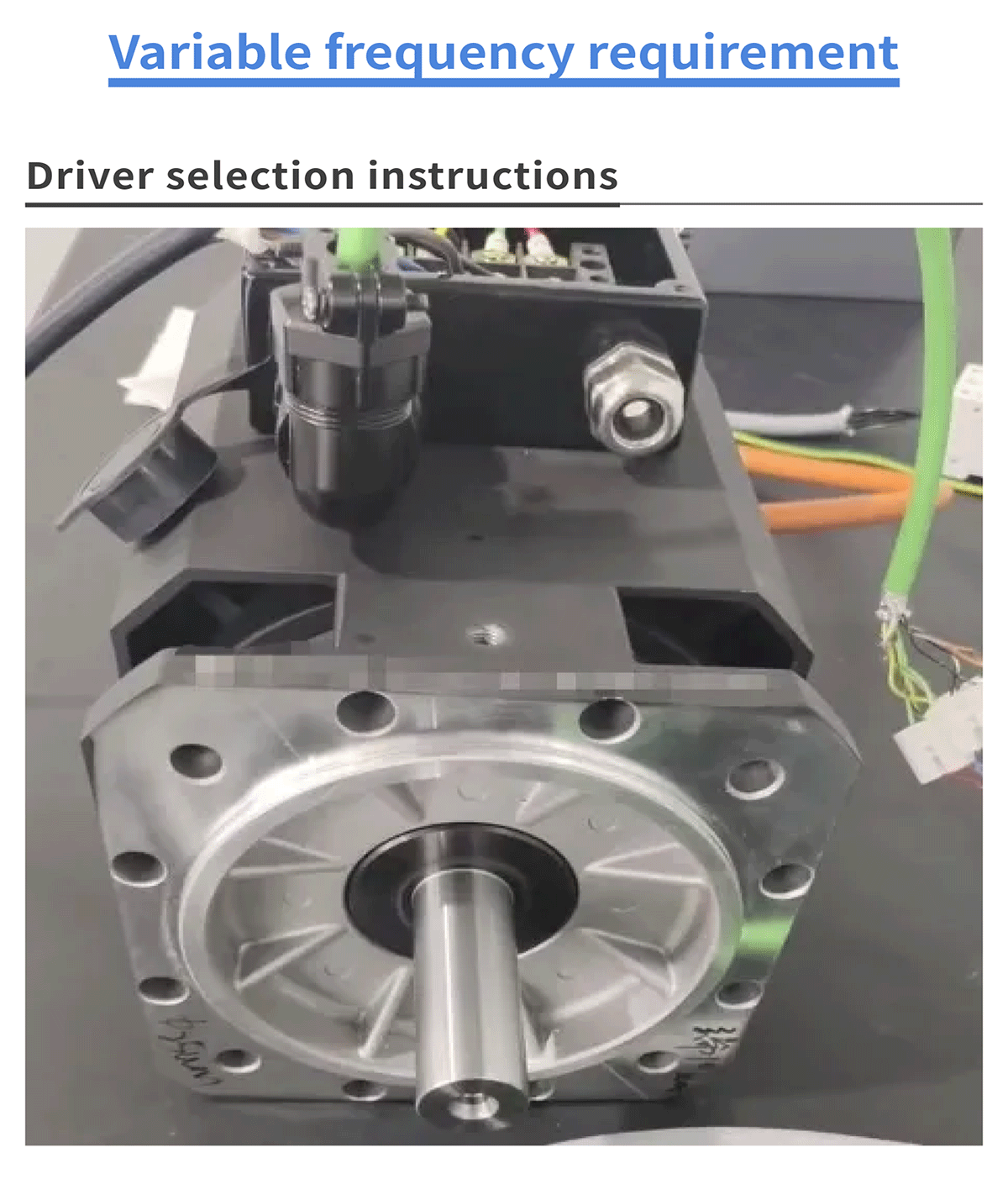
Spindle end: Motor type, nominal frequency, speed, current value
Encoder end: Differential, push-pull, rotary variable, UVW encoder PG card, ECN1313, sine-cosine encoder PG card
Host computer end: Analog input, pulse input, communication
Equipment model:Motor model provided by the manufacturer


The wiring diagram for high-speed electric spindle Inverter control is as follows:


Verify the wiring according to the electrical schematic diagram.
Perform self-learning with input motor parameters.
Conduct initial testing under no-load conditions to assess speed response, and adjust speed and position loop gains as necessary.
Once the no-load testing is satisfactory, proceed to load testing and fine-tune the parameters based on actual performance.
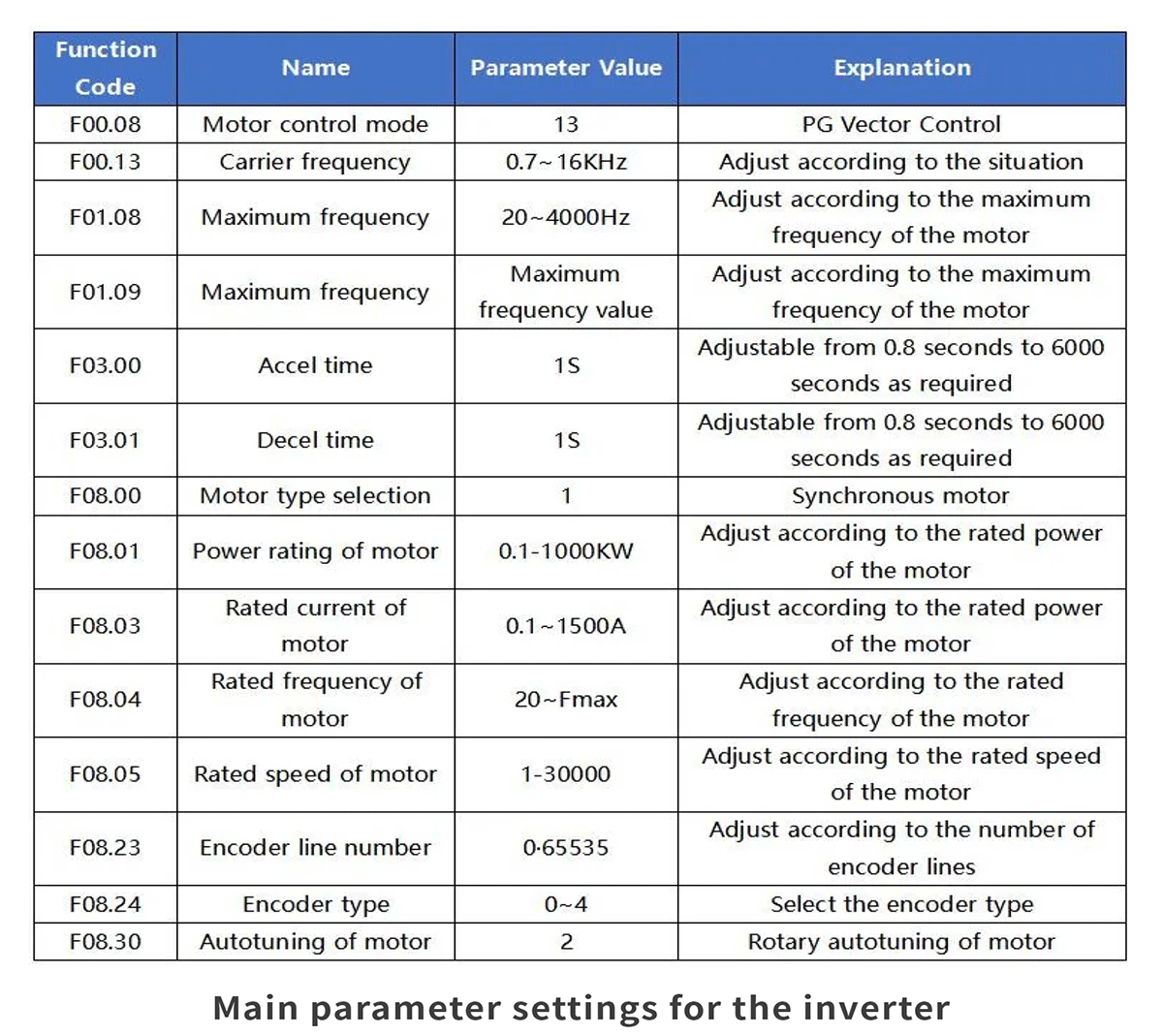
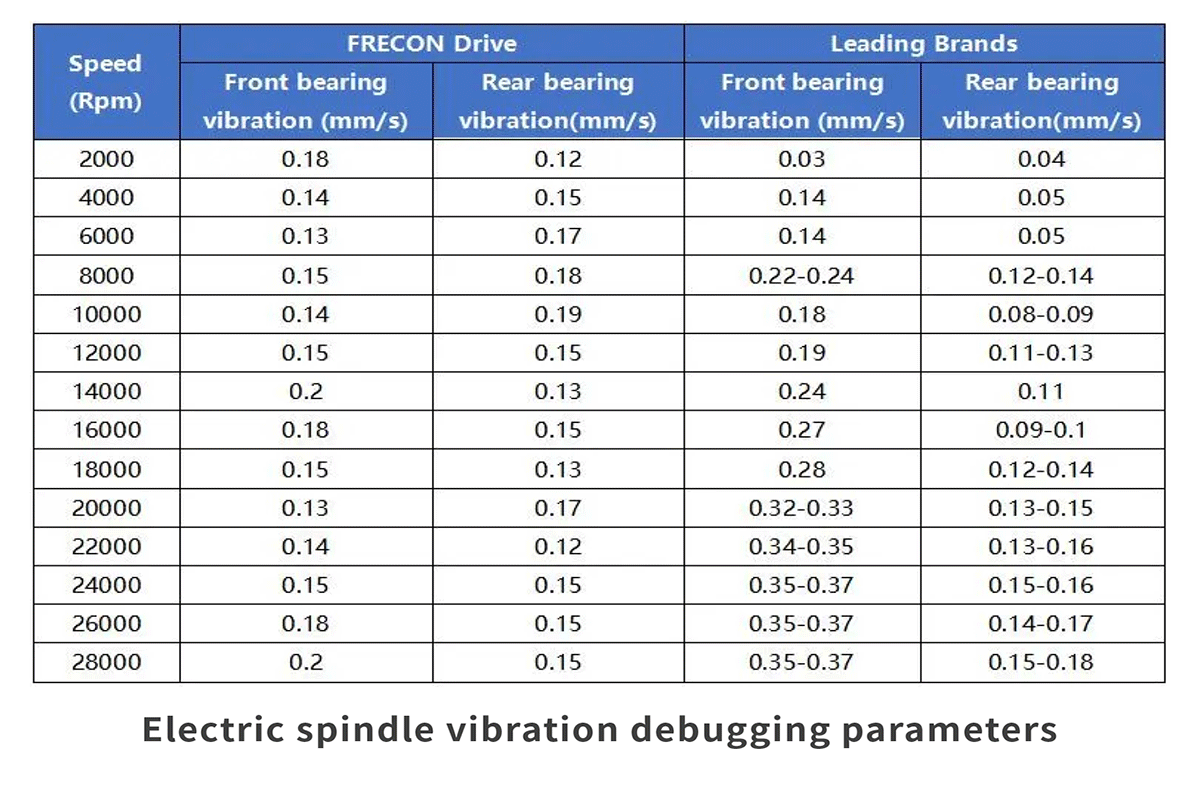

The FR510S inverter is an special drive designed for high-speed spindles. It features a wide speed range, fast response speed, and high control accuracy. In particular, it has the advantages of fast response speed (only 0.8s for acceleration and deceleration to 25,000 rpm) and high control accuracy (error under closed-loop vector control is as low as 0.025%, and motor vibration speed is below 0.2mm/s), ensuring smooth operation of high-speed electric spindles.



The FR510S inverter is an special drive designed for high-speed spindles. It features a wide speed range, fast response speed, and high control accuracy. In particular, it has the advantages of fast response speed (only 0.8s for acceleration and deceleration to 25,000 rpm) and high control accuracy (error under closed-loop vector control is as low as 0.025%, and motor vibration speed is below 0.2mm/s), ensuring smooth operation of high-speed electric spindles.

The application of FR510S in high-speed electric spindles successful has provided a domestic solution for the synchronous electric spindle industry. The FR510S inverter from FRECON has demonstrated high control accuracy, easy operation, convenient maintenance, and low failure rates, indicating that it can be applied in similar high-frequency industries.
